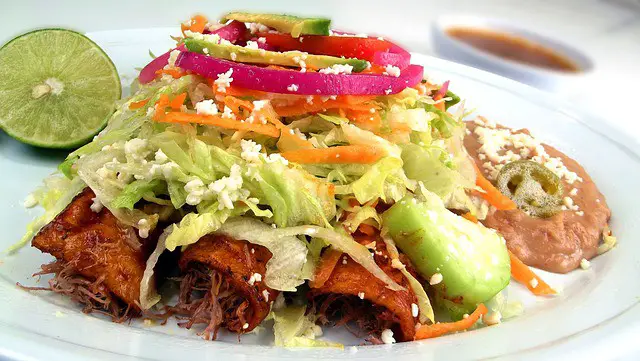Cumin and chili powder can be combined in recipes to add depth, warmth, and complexity of flavor. Both spices are commonly used in Mexican, Tex-Mex, and Indian cuisines, among others, and their combination can create a bold and spicy flavor profile.
Cumin has a warm and earthy flavor with a slightly bitter undertone, while chili powder is a blend of chili peppers and other spices like cumin, garlic, and oregano. Together, they can create a complex and flavorful profile in dishes.
Some common dishes that use a combination of cumin and chili powder include chili con carne, tacos, enchiladas, and Indian curries. They can also be added to roasted vegetables, soups, and stews to add warmth and depth.
When combining cumin and chili powder in a recipe, it’s important to use them in moderation and balance their flavors with other ingredients. Experiment with different ratios and combinations to find the perfect balance for your dish.
Dishes That Combine Cumin And Chili Powder
Cumin and chili powder are commonly used together in a variety of dishes in Mexican, Tex-Mex, Indian, and Middle Eastern cuisines, among others.
Here are some examples of dishes that combine cumin and chili powder:
- Chili con carne – This classic Tex-Mex dish features ground beef, beans, tomatoes, and a blend of spices, including cumin and chili powder.
- Tacos – Cumin and chili powder can be added to the taco seasoning blend, which can be used to season meat, vegetables, or beans.
- Enchiladas – A blend of cumin, chili powder, and other spices can be added to the enchilada sauce, which is used to flavor the filling and toppings.
- Shakshuka – This Middle Eastern breakfast dish features eggs poached in a spicy tomato sauce seasoned with cumin and chili powder.
- Indian curries – Cumin and chili powder are commonly used in Indian curries, such as chicken tikka masala and chana masala.
- Roasted vegetables – Cumin and chili powder can be added to roasted vegetables, such as sweet potatoes, cauliflower, and carrots, to add depth and warmth.
- Soups and stews – Cumin and chili powder can be added to soups and stews, such as lentil soup or beef chili, to create a bold and flavorful base.
These are just a few examples of dishes that combine cumin and chili powder. Their combination can add a depth of flavor and warmth to a variety of dishes, making them a popular choice in many cuisines.
Cumin And Chili Powder Comparison
| Factor | Cumin | Chili Powder |
|---|---|---|
| Flavor | Warm, earthy, slightly bitter | Spicy, slightly sweet, smoky |
| Color | Light brown | Can vary depending on blend |
| Origin | Mediterranean, Middle Eastern, and Indian | Modern American (inspired by Mexican cuisine) |
| Form | Whole seeds or ground | Ground |
| Culinary use | Commonly used in Mexican, Indian, Middle Eastern, and other cuisines. Often used in spice blends for seasoning meat, vegetables, and soups/stews. Commonly used in chili con carne, taco seasoning, and Indian curries. | Commonly used in Mexican and Tex-Mex dishes, such as chili con carne, taco seasoning, and enchilada sauce. Also used in other cuisines for seasoning meat, vegetables, and soups/stews. |
| Medicinal use | May aid digestion and improve blood sugar control. Has antioxidant and anti-inflammatory properties. | May aid digestion, boost metabolism, and relieve pain. Has antioxidant and anti-inflammatory properties. |
| Aroma | Warm, spicy, and slightly pungent | Spicy, smoky, and slightly sweet |
| Storage | Store in an airtight container in a cool, dry place away from light and heat. Whole seeds can be stored for up to two years, while ground cumin should be used within six months for best flavor. | Store in an airtight container in a cool, dry place away from light and heat. Use within six months for best flavor. |
Note that while chili powder is commonly associated with Mexican cuisine, it is actually a modern American invention that combines various spices commonly used in Mexican dishes.
The origins of cumin, on the other hand, can be traced back to the Mediterranean, Middle East, and India, where it has been used for centuries.

